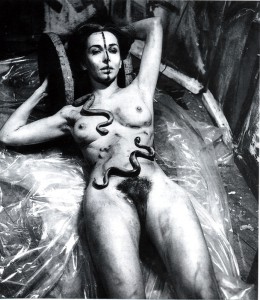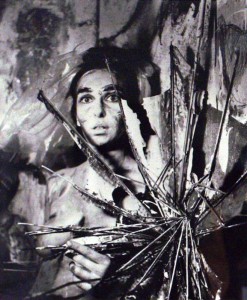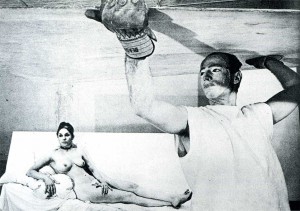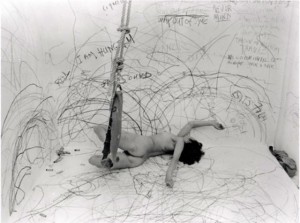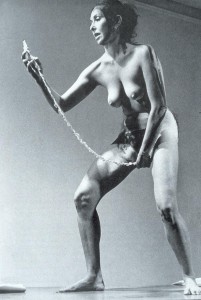Eye Body: 36 Transformative Actions (1963)
35mm black & white film
Photographed by Erró
Eye Body was Schneemann’s first use of her physical body as an active agent in her art work. The piece was a performance of sorts, but was displayed through the photographs taken by the Icelandic photographer, Erró. The piece revolved around Scheemann’s naked body interacting with objects such as: paint, plastic, feathers, plastic snakes, glass, ect. This was the beginning of her journey in using the human body as a new organic form of canvas, because, as the artist, stated herself, “…I establish my body as a visual territory.”
